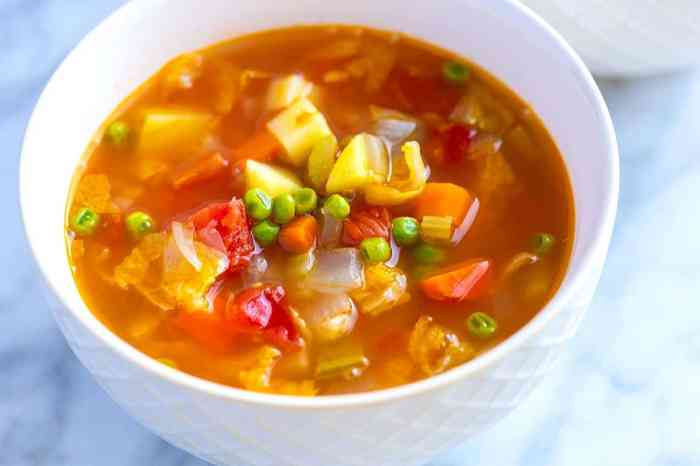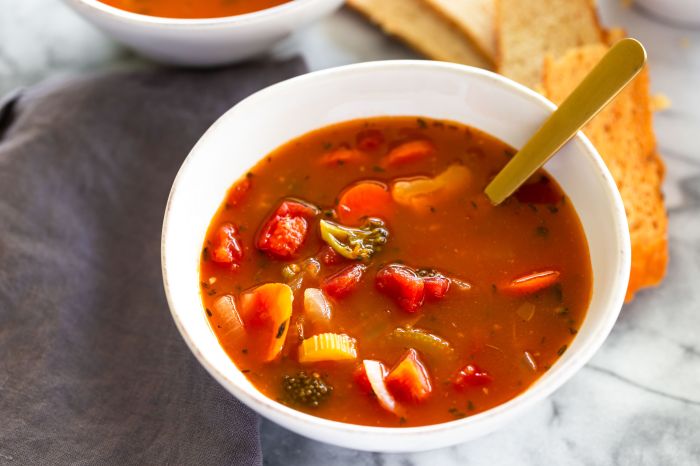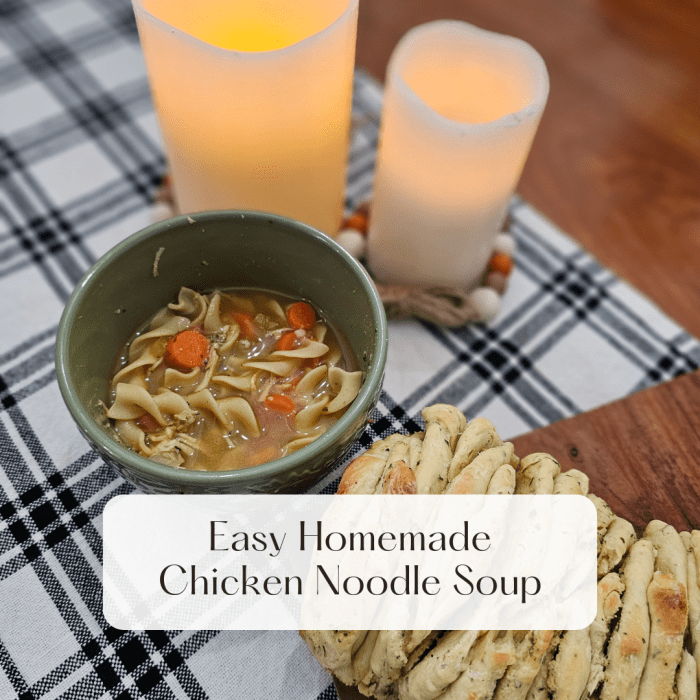The Enduring Appeal of Homemade Soup

Source: inspiredtaste.net
Taste home soup recipes – Homemade soup, a culinary staple across cultures, enjoys unwavering popularity. Its versatility, nutritional value, and comforting nature contribute to its enduring appeal. This article delves into the various facets of home soup recipes, exploring their popularity, diverse types, ingredient variations, preparation methods, serving suggestions, dietary adaptations, and storage techniques.
Popularity of Home Soup Recipes
Online search trends reveal a consistent demand for simple, comforting recipes. Five consistently popular choices illustrate this trend, highlighting the ease of preparation and readily available ingredients as key factors.
| Rank | Recipe Name | Popularity Score (Illustrative) | Reasons for Popularity |
|---|---|---|---|
| 1 | Chicken Noodle Soup | 95 | Classic comfort food, readily available ingredients, simple preparation. |
| 2 | Tomato Soup | 90 | Versatile, adaptable to various tastes (creamy, chunky), uses pantry staples. |
| 3 | Vegetable Soup | 85 | Healthy, customizable with seasonal vegetables, budget-friendly. |
| 4 | Lentil Soup | 80 | Hearty, nutritious, high in protein, relatively inexpensive. |
| 5 | French Onion Soup | 75 | Rich flavor, relatively easy to prepare, impressive presentation. |
Types of Home Soup Recipes, Taste home soup recipes

Source: thespruceeats.com
Home soup recipes span a wide range of flavors and ingredients, broadly categorized into distinct types. Each category offers unique characteristics in terms of ingredients, preparation, and flavor profiles.
- Vegetable Soup: Features a variety of vegetables like carrots, celery, potatoes, and onions, often enhanced with herbs and spices. Preparation typically involves sautéing aromatics, adding broth, and simmering until vegetables are tender.
- Chicken Noodle Soup: A classic comfort food featuring chicken broth, noodles, and shredded chicken, often with added vegetables like carrots and celery. Simmering is the primary cooking method.
- Lentil Soup: A hearty and nutritious soup made with lentils, vegetables, and broth. Lentils provide protein and fiber, contributing to a satisfying and filling meal. Simmering is essential for the lentils to soften.
- Creamy Tomato Soup: Made with tomatoes, often blended for a smooth consistency, and enriched with cream or milk. This soup offers a rich and flavorful experience.
- Beef Stew Soup: A hearty and flavorful soup featuring beef chunks, vegetables, and broth, often slow-cooked for maximum tenderness. This soup is known for its rich, savory flavor.
Ingredient Variations in Home Soup Recipes

Source: bullbutterco.com
Ingredient substitutions offer opportunities to personalize soup recipes, impacting both taste and nutritional value. Using seasonal ingredients enhances flavor and cost-effectiveness.
| Ingredient | Substitution | Impact on Taste/Nutrition |
|---|---|---|
| Chicken Broth | Vegetable Broth | Reduces fat and sodium, enhances vegetarian appeal. |
| Potatoes | Sweet Potatoes | Adds sweetness and vibrant color, increases vitamin A. |
| Carrots | Parsnips | Adds a slightly sweet and earthy flavor. |
| Fresh Herbs | Dried Herbs | Reduces freshness, may require adjustments in quantity. |
Recipe Preparation Methods
Various cooking methods influence the outcome of home soup recipes. Stovetop, slow cooker, and pressure cooker methods each offer unique advantages and disadvantages.
Stovetop Method (Example: Chicken Noodle Soup)
- Sauté diced onions, carrots, and celery in olive oil until softened.
- Add chicken broth, shredded chicken, noodles, and seasonings.
- Bring to a boil, then reduce heat and simmer until noodles are cooked through.
- Stir in fresh parsley before serving.
Serving Suggestions and Enhancements
Creative serving suggestions elevate the presentation and overall enjoyment of homemade soup. Garnishes and accompaniments add visual appeal and textural contrast.
| Soup Type | Suggested Garnish/Accompaniment |
|---|---|
| Chicken Noodle Soup | Fresh parsley, a squeeze of lemon, crusty bread |
| Tomato Soup | Croutons, a swirl of cream, basil leaves |
| Lentil Soup | A dollop of plain yogurt or sour cream, chopped cilantro |
Dietary Adaptations for Home Soup Recipes
Adapting soup recipes for various dietary needs is straightforward. Simple ingredient swaps and adjustments accommodate vegetarian, vegan, and gluten-free diets.
- Vegetarian: Replace chicken broth with vegetable broth, add more vegetables, and consider using vegetarian protein sources like tofu or beans.
- Vegan: Use vegetable broth, avoid dairy products, and ensure all ingredients are plant-based. Nutritional yeast can add a cheesy flavor.
- Gluten-Free: Use gluten-free noodles or omit noodles entirely. Ensure all other ingredients are gluten-free.
Storage and Reheating of Home Soup
Proper storage and reheating techniques maintain the quality and safety of homemade soup. Different soups may require slight variations in these processes.
Generally, homemade soup should be stored in airtight containers in the refrigerator for up to 3-4 days. Reheating can be done on the stovetop or in the microwave. Always ensure the soup is thoroughly heated before consuming.
Essential FAQs: Taste Home Soup Recipes
Can I freeze homemade soup?
Yes, most homemade soups freeze well. Allow the soup to cool completely before storing in airtight containers. Freezing times vary depending on the soup’s ingredients and volume.
How long does homemade soup last in the refrigerator?
Generally, homemade soup will last for 3-4 days in the refrigerator. Always ensure proper refrigeration to maintain safety and quality.
What are some good vegetarian soup options?
Many vegetables lend themselves well to soups. Consider minestrone, vegetable broth-based soups with root vegetables, or creamy tomato soups.
Can I use a blender to make my soup smoother?
The comforting taste of home soup recipes often evokes cherished memories. A particularly hearty and flavorful option is a soup recipe with cabbage , which adds a delightful depth of flavor and texture. Mastering a few simple cabbage soup recipes can significantly enhance your repertoire of delicious and satisfying home-cooked meals.
Yes, using an immersion blender or carefully transferring portions to a regular blender can create a smoother texture, especially for creamier soups.
